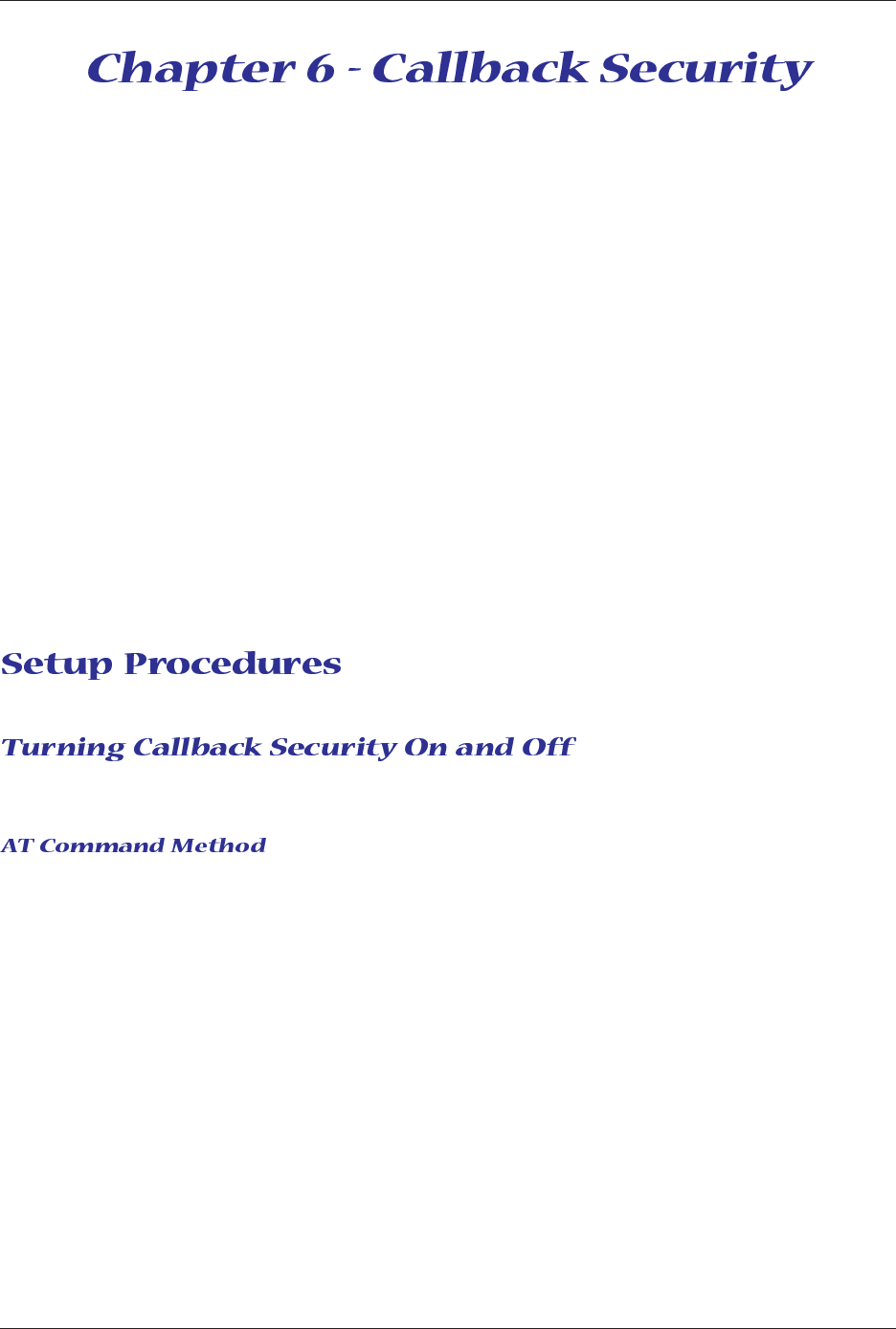User Guide Network Device MT5600BAV.92, MT5600BAV.90, MT5600BLV.90
Table Of Contents
- Table of Contents
- Chapter 1 - Description and Features
- Chapter 2 - Installation
- Chapter 3 - Using the Front Panel
- Modem Configuration
- LED Indicators
- Liquid Crystal Display (LCD)
- Option Selection
- Menu Structure
- Menu Overview
- Status Trunk
- Basic Options Trunk
- Advanced Options Trunk
- Remote Configuration Options Trunk
- Diagnostic Options Trunk
- Phone Number Memory Options Trunk
- Caller ID Options Trunk
- Menu Options
- Status
- Basic Options
- Advanced Options
- Remote Configuration Options
- Diagnostic Options
- Phone Number Memory Options
- Caller ID Options
- Chapter 4 - Leased Line Operation
- Chapter 5 - Remote Configuration
- Chapter 6 - Callback Security
- Chapter 7 - Troubleshooting
- None of the Indicators Light
- The Modem Does Not Respond to Commands
- The Modem Cannot Connect When Dialing
- The Modem Disconnects While Online
- The Modem Cannot Connect When Answering
- File Transfer Is Slower Than It Should Be
- Data Is Being Lost
- There Are Garbage Characters on the Monitor
- The Modem Doesn't Work with Caller ID
- Fax and Data Software Can't Run at the Same Time
- Appendix A - Regulatory Compliance
- Appendix B - Technical Specifications
- Appendix C - Warranty, Service, and Technical Support
- Appendix D - Upgrading the Firmware
- Appendix E - Installing a Modem Under Linux
- Appendix F - Pin Descriptions
- Index

Chapter 6 - Callback Security
35
Multi-Tech Systems, Inc. MT5600BA/BL Series User Guide
This chapter describes how to use callback security with your modem.
Callback security protects your network from unauthorized access and helps control long distance costs.
When callback security is enabled, all callers are requested to enter a password. If the password is in-
valid, the caller can try twice more before the modem hangs up. If the password is valid, the modem
hangs up and returns the call by dialing the phone number associated with the password.
It is possible to implement password protection without callback by storing a hyphen (-) before the call-
back phone number. The caller must then append a hyphen to his password to establish the direct con-
nection.
The modem can store up to 30 callback phone numbers and 30 callback passwords. Phone numbers can
be up to 30 characters long and can contain the pause (,) and wait (W) characters in addition to the digits
and characters normally found on a touch-tone keypad. Passwords can be up to 10 characters long.
Callback phone numbers are associated with callback passwords by being assigned to the same callback
memory location. For example, if you assign the password “APRICOT” to memory location 16 and, in a
separate operation, also assign phone number 6127853000 to memory location 16, the modem calls
phone number 6127853000 when it receives the password “APRICOT.”
Because there is no way to examine the passwords and phone numbers stored in the modem, it is impor-
tant to write them down as you enter them. A form that you can print out for this purpose is provided on
the last page of this chapter.
Note: Autoanswer must be enabled (S0=1 or S0=2) for callback security to work.
1. Open a terminal program, such as HyperTerminal.
2. In the terminal window, type one of the following commands:
· To turn on callback security, type AT#DB1 and press ENTER. With remote callback security
turned on, each caller is asked to enter a password, then is disconnected and called back by
the modem. Also, dialing number locations 0–3, for use with the
DS=y
dialing command, are
replaced by callback dialing number locations 1–30.
· To turn off callback security, type AT#DB0 and press ENTER. Callers no longer need a password
to connect to the modem, the modem is unable to call them back, and stored dialing number
locations 0–3 become available.










